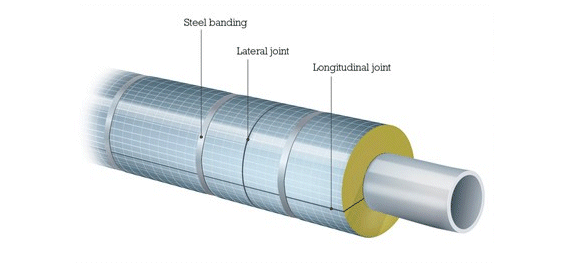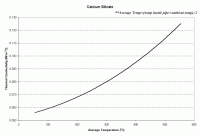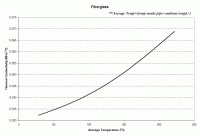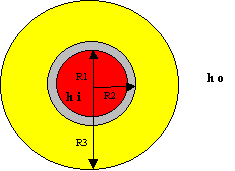Chemical and Process Engineering Resources

Many people overlook the importance of insulation in the chemical industry. Some estimates have predicted that insulation in U.S. industry alone saves approximately 200 million barrels of oil every year.
While placing insulation onto a pipe is fairly easy, resolving issues such as what type of insulation to use and how much is not so easy. Insulation is available in nearly any material imaginable. The most important characteristics of any insulation material include a low thermal conductivity, low tendency toward absorbing water, and of course the material should be inexpensive. In the chemical industry,
 |  | |
| Figure 1: Thermal Conductivity of Calcium Silicate Insulation | Figure 2: Thermal Conductivity of Fiberglass Insulation |
A Brief Look at Theory
 The most basic model for insulation on a pipe is shown below. R1 and R2 show the inside and outside radius of the pipe respectively. R3 shows the radius of the insulation. Typically when dealing with insulations, engineers must be concerned with linear heat loss or heat loss per unit length.
The most basic model for insulation on a pipe is shown below. R1 and R2 show the inside and outside radius of the pipe respectively. R3 shows the radius of the insulation. Typically when dealing with insulations, engineers must be concerned with linear heat loss or heat loss per unit length.
Generally, the heat transfer coefficient of ambient air is 40 W/m2 K. This coefficient can of course increase with wind velocity if the pipe is outside. A good estimate for an outdoor air coefficient in warm climates with wind speeds under 15 mph is around 50 W/m2 K.
 | Eq. (1) |
The total heat loss per unit length is calculated by:
 | Eq. (2) |
 |
| Figure 3: Heat Loss vs. Insulation Thickness |
Since heat loss through insulation is a conductive heat transfer, there are instances when adding insulation actually increases heat loss. The thickness at which insulation begins to decrease heat loss is described as the critical thickness. Since the critical thickness is almost always a few millimeters, it is seldom (if ever) an issue for piping. Critical thickness is a concern however in insulating wires. Figure 3 shows the heat loss vs. insulation thickness for a typical insulation. It's easy to see why wire insulation is kept to a minimum as adding insulation would increase the heat transfer.
Thinking About Insulation from All Sides
Three major factors play an important role in determining insulation type and thickness. Here, we'll focus on resolving the thickness issue since many manufacturing facilities have a "standard" type of insulation that they use. The three key factors to examine are:
- Economics
- Safety
- Process Conditions
Each situation must be studied to determine how to meet each one of these criteria. First, we'll examine each aspect individually, then we'll see how to consider all three for an example.

 FB
FB


2 Comments
Great article and very helpful.